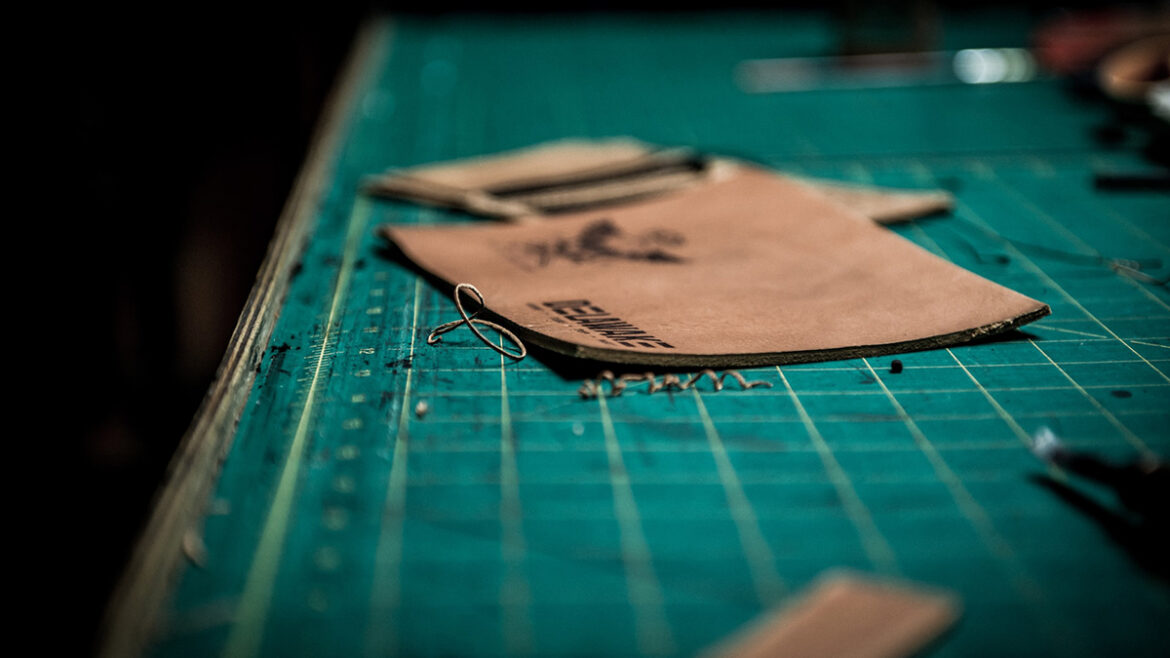Vegan leather is a type of leather that doesn’t include any animal products. It typically comes from synthetic materials, such as polyurethane or polyvinyl chloride, which are treated to resemble the look and feel of leather. Vegan leather has become increasingly popular in recent years as more people look for ways to avoid using animal products. It is used in clothing, shoes, and accessories. It comes in a variety of colors and styles. Vegan leather is much more affordable and is more environmentally friendly to produce.
Impact of leather production on the environment
The leather industry has a significant impact on the environment. The process of tanning leather uses large amounts of water and energy and generates hazardous waste that can pollute water sources. None of the ingredients used in the leather industry is biodegradable, so it stays on land for generations.
The leather industry is also one of the leading causes of deforestation, as trees are getting cleared to make room for cattle ranching. It can lead to soil erosion and loss of habitat for wildlife. Wild animals lose their natural habitats, which leads to a dangerous migration to villages and cities.
The use of leather also contributes to climate change. Cattle ranching emits enormous emissions of greenhouse gases, including carbon dioxide and methane. According to a case study published in Energy Procedia, the carbon footprint of bovine leather ranges between 65 to 150 kg CO2 per square meter.
Finally, leather is one form of a very inhumane act towards animals.
If you really care about animals, then stop trying to figure out how to exploit them ‘compassionately’. Just stop exploiting them
Gary Francione
Benefits of using vegan leather
There are several benefits to using vegan leather.
- It is more affordable than leather.
- It is more environmentally friendly to produce, as it saves large amounts of natural resources such as land and water produce.
- Vegan leather is also more versatile than leather, and it might be easier to combine. It doesn’t lose shape fast as leather does. It is also typically more durable than leather, making it a good choice for clothing, shoes, and accessories.
- Finally, vegan leather is a more humane option than leather, as it does not require the use of any animal products.
Also Read: How is the Red Meat Industry Linked to the Planet Pollution?
What is the consistency of vegan leather?
Vegan leather is usually made of synthetic materials, such as polyurethane or polyvinyl chloride. It came to the point that now there is no difference between real and vegan leather when you compare them next to each other.
Mushroom leather
Animal cruelty in the leather industry
The leather industry is associated with several animal welfare concerns. But it is also dangerous to humans and workers who work in the leather industry, as the tanning leather process often uses harsh chemicals that can be harmful to the workers who are directly exposed. Cattle ranching is also associated with animal cruelty. Cattles are living in crowded conditions, and growth hormones and antibiotics are given to them. Animals are fed with hormones and antibiotics for growth to have more leather.
Exotic animal leather
Exotic animal leather is a type of leather that comes from the skin of an animal that is rare. Specimens of exotic animal leather include alligators, ostrich, and snakes. Exotic animal leather is more expensive than other types of leather and is often used for high-end products, such as clothing, shoes, and accessories. This kind of leather is associated with several animal welfare concerns, as the animals are often kept in crowded conditions.
Some brands use rare and extinct species of animals to produce exotic leather. The rarer the animal, the more it costs. Even the usage of albino animals, which is a rare white condition to some species, is used for exotic leather production.
Albino alligator is very expensive when turned into an accessory. The practice of “skinning” the animals is beyond cruel, as most animals are alive during the whole process. So without first killing them, the workers start to take the skin off the animal’s body. It causes great pain and suffering, and the animals will soon die after the process.
The question is – why is this practice still used when there are less cruel and cleaner ways of leather production? As long as there is a demand for such products, the industry will exist. It is our responsibility to avoid such brands and products to minimize this practice.
Conclusion:
There are many options to switch to vegan leather, whether you want to go for synthetic alternatives if you care about the animals, or more natural ones if you care about the environment. However, if there are replacements and alternatives, why the leather industry still exists? And now, don’t focus only on clothing: leather is everywhere – in furniture, cars, decoration, etc.
Everything is replaceable with a cleaner and more humane option! Because there is nothing beautiful in wearing animals’ skin on yourself. Sometimes people do things because of a lack of knowledge, not because of ignorance. Grow awareness among your friends and teach them what you know so we can make our planet a better place for living without cruelty and suffering!
